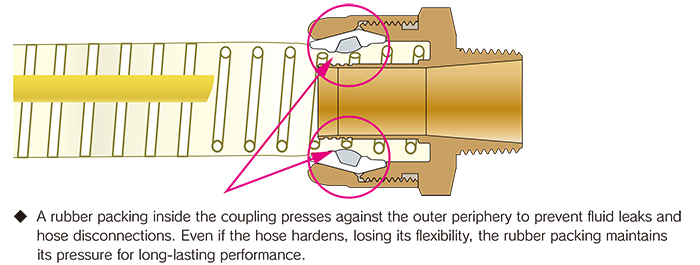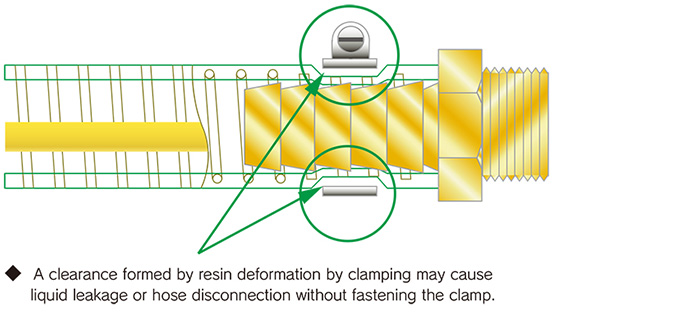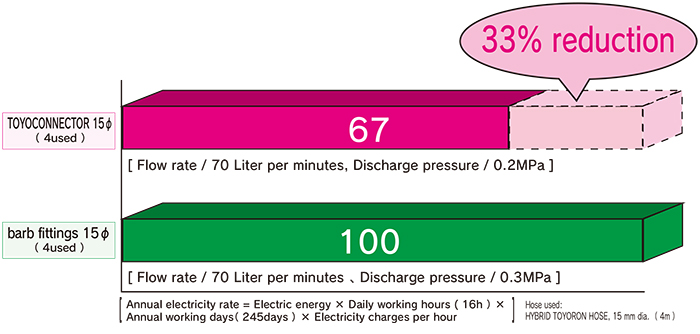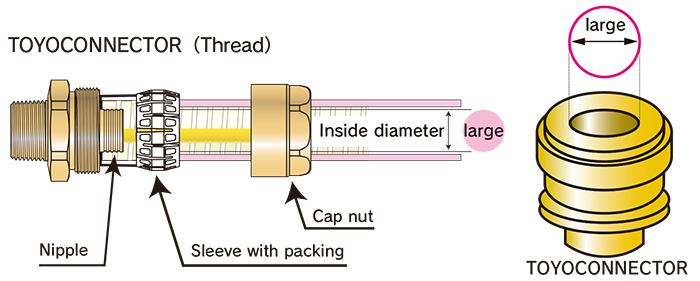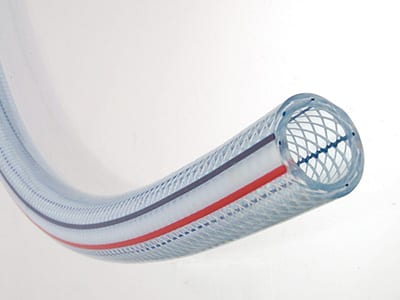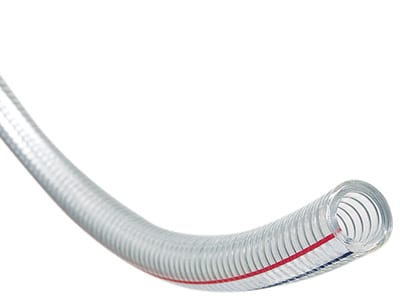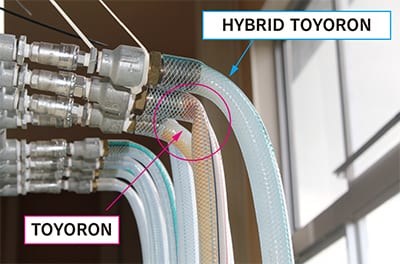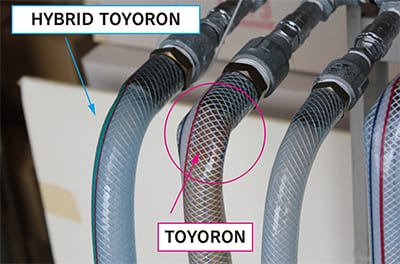- Useful suggestions
- Proposals made for
hoses and couplings - Helps save energy
- Helps ensure food safety
- Helps improve productivity
- Helps ensure "work safety"
- Helps reduce costs
- Proposals by application
- Food ingredient conveyance
- High-temperature water cleaning such as using a mixing valve
- Near the load cell at the food plant
- Molding plants Pellet conveyance
- Molding plants Chiller and mold temperature regulator
Helps save energy
with hoses and couplings
with hoses and couplings
-
TOYOX has developed not only hoses but also dedicated couplings for TOYOX Hoses to make hose piping more effective.
Use TOYOX hoses and couplings to help save energy(1) Saves energy by leak and disconnection prevention
Eliminate the leaks first.
Leak and disconnection prevention thanks to structural differences
For TOYOCONNECTOR

For hose clamp fastening of barb fittings

TOYOCONNECTOR saves energy by leak and disconnection prevention.
(2) Saves energy by reducing pressure loss at couplings
Electricity amount comparison by pressure loss
* TOYOCONNECTOR thread type only


TOYOCONNECTOR saves energy by reducing pressure loss.
(3) Saves energy by reducing pressure loss at hoses
Eliminate the hose bend and collapse first
Save energy by reducing pressure loss. In other words, it is important that the hose does not bend or collapse. Hoses are available in the shape-retaining type (reinforced with metal and resin coils) that reduces bending and collapsing, and the braided type that emphasizes flexibility and pressure resistance. Here, we introduce the comparison results of the braided type.
Comparison of bend due to its own weight
Comparison example between our TOYORON Hose and HYBRID TOYORON Hose
Test conditions: Hoses were compared after being filled with water and left to bend and collapse under their own weight.
Image taken after 3 years and 11 monthsComparison of bend due to its own weightCompared to the above conditions, TOYORON bent immediately after piping, and HYBRID TOYORON did not bend.
You can save energy by selecting a hose that does not easily bend or collapse. In order to further save energy, an appropriate coupling combination can be selected to prevent leakage and minimize pressure loss.
-









